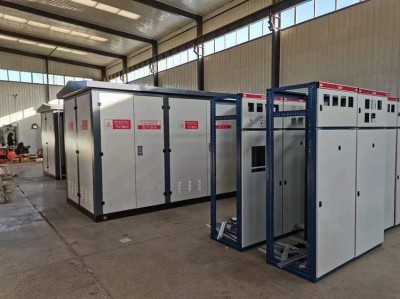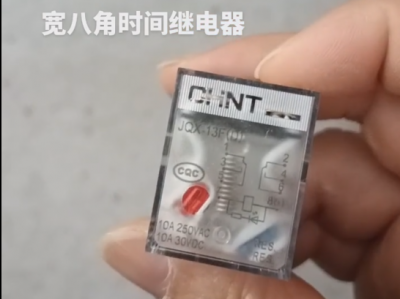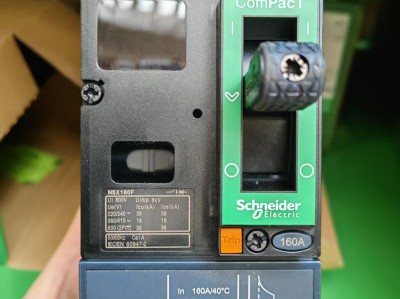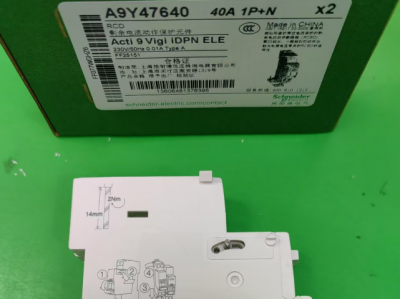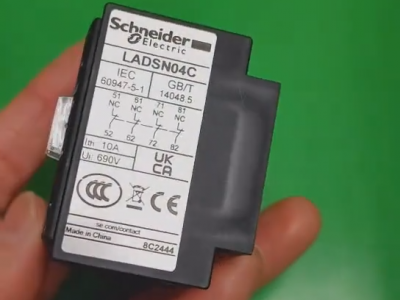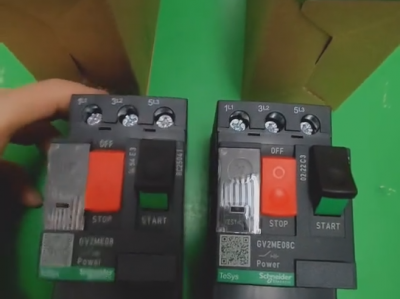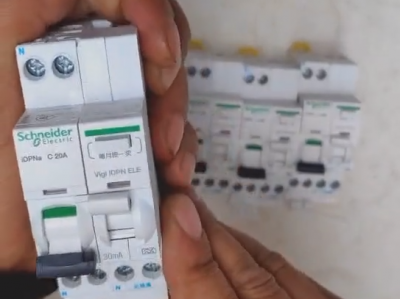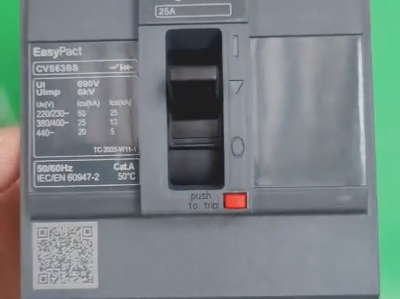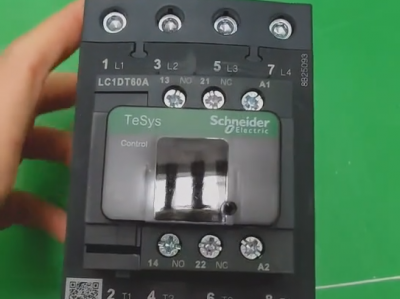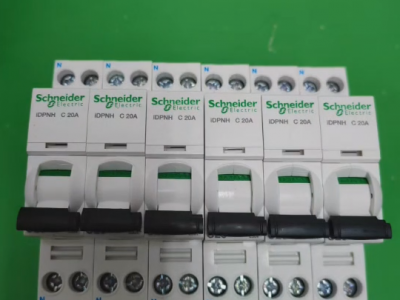Chint NB1-63DC circuit breaker
Product description
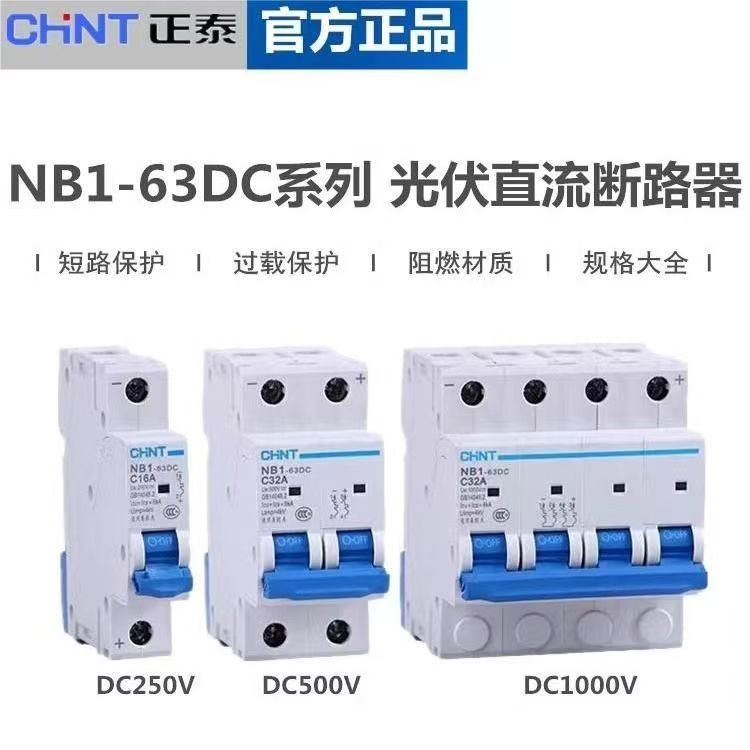
Chint NB1-63DC is a circuit breaker specially designed for DC systems, especially suitable for photovoltaic application scenarios. The following is a detailed analysis of its core technical parameters, application characteristics and related information:
I. Core Technical Parameters
1. **Voltage and Current Range**
The rated DC voltage covers three levels: 250V, 500V, and 1000V (corresponding to 1P, 2P, and 4P pole numbers), and the rated current ranges from 1A to 63A, which can meet the needs of photovoltaic systems of different scales. In terms of breaking capacity, the rated ultimate short-circuit breaking capacity (Icu) of 1P/2P/4P at the corresponding voltage is 6kA, while the breaking capacity of low-voltage specifications (such as 1P 125V, 2P 250V, 4P 500V) can reach 10kA, which complies with the IEC 60947-2 standard.
2. **Tripping Characteristics and Protection Functions**
It adopts a C-type tripping curve (7-10 times the rated current), which is suitable for photovoltaic systems with inductive loads and low inrush current. It has dual protection against overload and short circuit, which can quickly respond to abnormal currents and prevent equipment damage.
3. **Weather Resistance and Environmental Adaptability**
The operating temperature range is -35°C to +70°C, which can adapt to extreme climate conditions. The pollution degree is level 2, which is suitable for general industrial environments, but the protection level is IP20 (dust-proof but not waterproof). It is recommended to install it in a distribution box or take additional waterproof measures.
4. **Certification and Compliance**
It has passed multiple international certifications such as CCC, CE, TÜV, and EAC, and meets the EU RoHS environmental protection requirements. For the US market, some models have passed UL certification (such as UL1077), but it is necessary to confirm whether the specific model includes NB1-63DC.
II. Advantages in Photovoltaic Applications
1. **DC System Compatibility**
Specially designed for DC, it supports 1000V high-voltage systems and can be directly applied to the combiner box of photovoltaic arrays or the DC side of inverters, replacing traditional AC circuit breakers and reducing system complexity.
2. **Convenience of Installation and Maintenance**
It adopts TH35mm standard rail installation, supports dual wiring methods of wires and busbars. The terminal can be adapted to copper wires below 25mm², and the torque requirement is 2.0N·m. The on-off state of the contacts is displayed through obvious marks, which is convenient for maintenance.
3. **Accessory Expansion Capability**
It can be equipped with accessories such as auxiliary contacts (XF9), alarm contacts (XF9J), and shunt releases (S9) to realize functions such as remote monitoring and fault alarm, and improve the intelligence level of the system.
III. Typical Application Scenarios
1. **Photovoltaic Array Protection**
In the DC line from the photovoltaic panel string to the combiner box, NB1-63DC can be used as a primary protection to prevent safety risks caused by component short circuits or line faults.
2. **Inverter DC Side Protection**
Installed at the DC input port of the inverter, it protects the inverter from abnormal current impact and facilitates circuit disconnection during maintenance.
3. **Energy Storage System Matching**
It is suitable for the charge-discharge circuit of energy storage battery packs, providing overcurrent protection to ensure the stability and safety of the energy storage system.
IV. Selection and Precautions
1. **Parameter Matching**
- Select the corresponding number of poles according to the system voltage (for example, a 1000V system requires a 4P model), and ensure that the breaking capacity is greater than the expected short-circuit current.
- The current specification needs to be derated according to the maximum operating current (Isc) and temperature coefficient of the photovoltaic array, and it is recommended to reserve a 20% margin.
2. **Installation Environment**
- Avoid direct exposure to rain or high humidity environments. It is recommended to install it in a distribution box with IP65 protection level.
- When the altitude exceeds 2000m, the rated current needs to be adjusted according to the correction factor (for example, derated to 90% at 2500m).
3. **Compliance Verification**
When exporting to the North American market, it is necessary to confirm whether the specific model has obtained UL certification (such as UL489) and complies with local electrical specifications.
V. Market Feedback and Price Reference
1. **User Reviews**
Most users recognize its cost performance and reliability, but some feedbacks mention that there are differences in workmanship of products sold through different channels. It is recommended to purchase through formal distributors to ensure product quality.
2. **Price Range**
The price of the single-pole (1P) model is about 20-50 yuan, the double-pole (2P) is about 30-100 yuan, and the four-pole (4P) is about 50-200 yuan, which varies according to the current specification and purchase quantity. The price in the US market may increase by 30%-50% due to import tariffs and channel costs.
VI. 2025 Product Update
Since 2024, NB1-63DC has optimized the pad printing logo, including the adjustment of the tripping current labeling format and the update of certification information, but there is no change in performance. Users may receive products with both old and new logos when purchasing, which are all genuine products and do not affect use.
Summary
Chint NB1-63DC has become the mainstream choice for DC side protection of photovoltaic systems due to its high voltage compatibility, reliable protection performance and flexible expansion capability. In selection and application, it is necessary to focus on voltage level, breaking capacity and environmental adaptability, and give priority to purchasing through certified channels to ensure compliance. For outdoor installation scenarios, it is recommended to match a distribution box with a higher protection level or take additional moisture-proof measures to extend the service life of the equipment.
The service life of Chint NB1-63DC photovoltaic circuit breaker is mainly determined by two core indicators: **mechanical life** and **electrical life**, and is also affected by environmental conditions, load characteristics and maintenance conditions. The following is a detailed analysis based on official technical documents and industry standards:
I. Official Rated Life Parameters
According to the product manual and multi-platform technical data, the life indicators of NB1-63DC are as follows:
1. **Mechanical life**: ≥20,000 times
It refers to the number of on-off operations of the circuit breaker under no-load conditions, which is suitable for manual operation scenarios during daily maintenance or system debugging. For example, if preventive maintenance operations are carried out twice a year, it can meet the mechanical operation needs for 10,000 years.
2. **Electrical life**: ≥1,500 times
It refers to the number of breaking operations of the circuit breaker under rated voltage and current, which is directly related to its protection performance. For photovoltaic systems, circuit breakers usually act only in case of faults. Assuming that a short-circuit fault occurs once a year, it can theoretically be used for 1,500 years.
II. Factors Affecting Actual Life
1. **Environmental Conditions**
- **Temperature**:
Long-term operation at high temperatures (such as >50°C) will accelerate contact oxidation and aging of plastic parts. When the ambient temperature exceeds 40°C, it is recommended to derate by 5% for every 10°C increase. For example, in the California desert area, high summer temperatures may shorten the life of the circuit breaker by 10%-20%.
- **Humidity and Pollution**:
The IP20 protection level is only dust-proof. If installed in a humid environment (such as coastal areas), it is necessary to match an IP65 distribution box; otherwise, the insulation performance may decrease, resulting in a 30%-50% reduction in life.
- **Altitude**:
When the altitude exceeds 2000 meters, the thin air will reduce the heat dissipation efficiency. For example, at an altitude of 2500 meters, the rated current needs to be derated to 90%, which may indirectly affect the electrical life.
2. **Load Characteristics**
- **Overload Frequency**:
If it operates at more than 80% of the rated current for a long time, the contact temperature rise will increase significantly. For example, a continuous overload of 20% may reduce the electrical life from 1,500 times to 800 times.
- **Short-Circuit Current Amplitude**:
Although the breaking capacity of the circuit breaker can reach 6kA (1000V), frequent breaking of large currents close to the rated breaking capacity (such as >4kA) will accelerate the wear of the arc extinguishing chamber, which may halve the electrical life.
3. **Maintenance and Installation**
- **Wiring Tightness**:
If the terminal is not tightened according to the 2.0N·m torque, the increased contact resistance will cause heating, which may shorten the contact life by 40%.
- **Regular Inspection**:
Conducting an action characteristic test (such as trip time verification) every 5 years can timely detect potential faults and extend the actual service life.
III. Industry Comparison and Typical Cases
1. **Comparison with Similar Products**:
The electrical life of Schneider iC65 DC photovoltaic circuit breaker is 2,000 times, and that of ABB DC C65 is 1,800 times. The 1,500 times of NB1-63DC is at the medium level in the industry, but it has a significant cost performance advantage.
2. **Practical Application Cases**:
A 10MW photovoltaic power station uses NB1-63DC circuit breakers. After 8 years of operation, the inspection found that:
- The number of mechanical operations is only 32, and the remaining mechanical life is 98.4%;
- The number of electrical breaking operations is 11, and the remaining electrical life is 99.3%;
- The contact temperature rise has increased by 8°C compared with the initial value, and it is recommended to replace it within 10 years.
IV. Key Measures to Extend Life
1. **Environmental Optimization**:
- For outdoor installation, a temperature-controlled fan should be installed in the distribution box (such as starting when the temperature is >50°C), which can reduce the contact temperature rise by 15%-20%.
- In coastal areas, it is recommended to clean the salt spray on the surface of the circuit breaker every quarter to prevent corrosion.
2. **Load Management**:
- It is recommended to configure a surge protector (SPD) on the DC side of the inverter to limit the amplitude of lightning strikes or operating overvoltage within the withstand range of the circuit breaker (4kV).
- Regularly analyze the current curve through the monitoring system to avoid long-term overload.
3. **Maintenance Strategy**:
- Check the carbonization degree of the arc extinguishing chamber every 3 years. If the contact wear exceeds 30% of the original thickness, it needs to be replaced.
- It is recommended to replace the circuit breaker as a whole every 5 years to avoid the risk of aging of plastic parts and ensure system reliability.
V. Typical Life Cycle Cost Analysis
Taking the 1000V/63A model as an example:
- **Initial cost**: About 200 yuan/unit;
- **Maintenance cost**: About 50 yuan/unit for inspection every 5 years;
- **Replacement cost**: About 200 yuan/unit for replacement after 10 years of operation;
- **Annual average cost**: About 45 yuan/unit, which is much lower than the system downtime loss caused by faults (usually >1000 yuan/time).
VI. Conclusion
The **theoretical design life** of Chint NB1-63DC photovoltaic circuit breaker is:
- Mechanical life: 20,000 operations (about 10,000 years);
- Electrical life: 1,500 breakings (about 1,500 years).
The **actual service life** is significantly affected by the environment and load. Under standard working conditions (25°C, altitude <1000m, no continuous overload), it can operate stably for **15-20 years**. For high humidity, high altitude or high temperature environments, it is recommended to conduct a comprehensive inspection every 5 years, and prefer models with auxiliary contacts (such as NB1-63DC+XF9) to realize remote status monitoring and further improve system reliability.

